The Radical Erotic
Louise Bourgeois, Eva Hesse and Alice Adams at The Courtauld Gallery
The Courtauld Gallery’s Abstract Erotic reunites the work of Louise Bourgeois, Eva Hesse and Alice Adams for the first time since the groundbreaking 1966 New York exhibition Eccentric Abstraction. That show marked a turning point in art history when the minimalist – and material – conventions of sculpture were being overturned and replaced with a new, visceral approach. It was also quietly radical in another way: three of the eight artists featured were women, a rarity in the male-dominated art world of the time. By selectively returning to these three artists The Courtauld raises the question of how much progress has been made over the last six decades in empowering women to assert their sexuality. The often sinister feel to Bourgeois’, Hesse’s and Adams’ work speaks to how women’s voices – particularly in voicing their desires – are still suppressed.
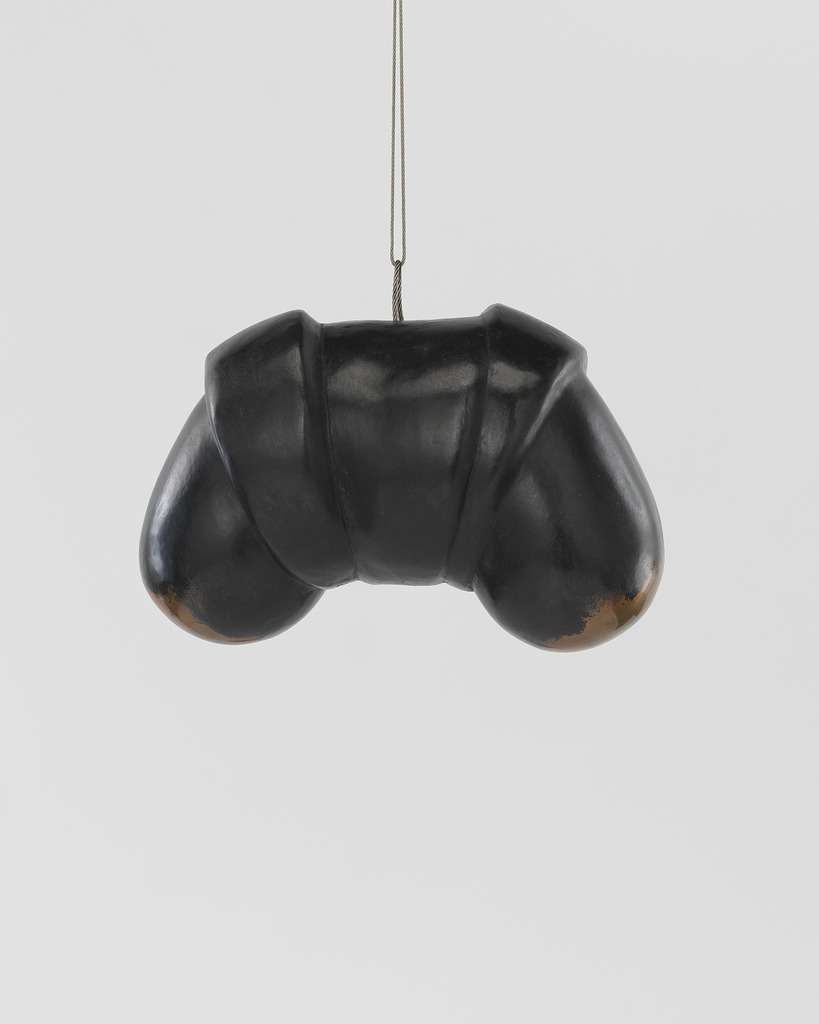
Louise Bourgeois, Hanging Janus, 1968. The Easton Foundation, New York. © The Easton Foundation, VAGA at ARS, NY and DACS, London 2025. Photo/ Christopher Burke
"bulbous, fleshy and flawed"
Displaying these artists’ work together feels natural, necessary. All three explore the productive tension born out of contradictions; between object and shadow, containment and spillage, interior and exterior, male and female. While not always overtly sexual, the materials and forms used in these artists’ work have a sensuality to them: latex, papiér mache and netting are displayed alongside bronze, industrial metal and resin; the sculptures often evoke bodily forms that are distinctly bulbous, fleshy and flawed. The use of inorganic materials to produce abstract, organic forms reflects the limits placed on women’s freedom of expression: unable to communicate eroticism directly under the constraints of male authority, these artists turned to suggestion – through form and material – as a mode of resistance.
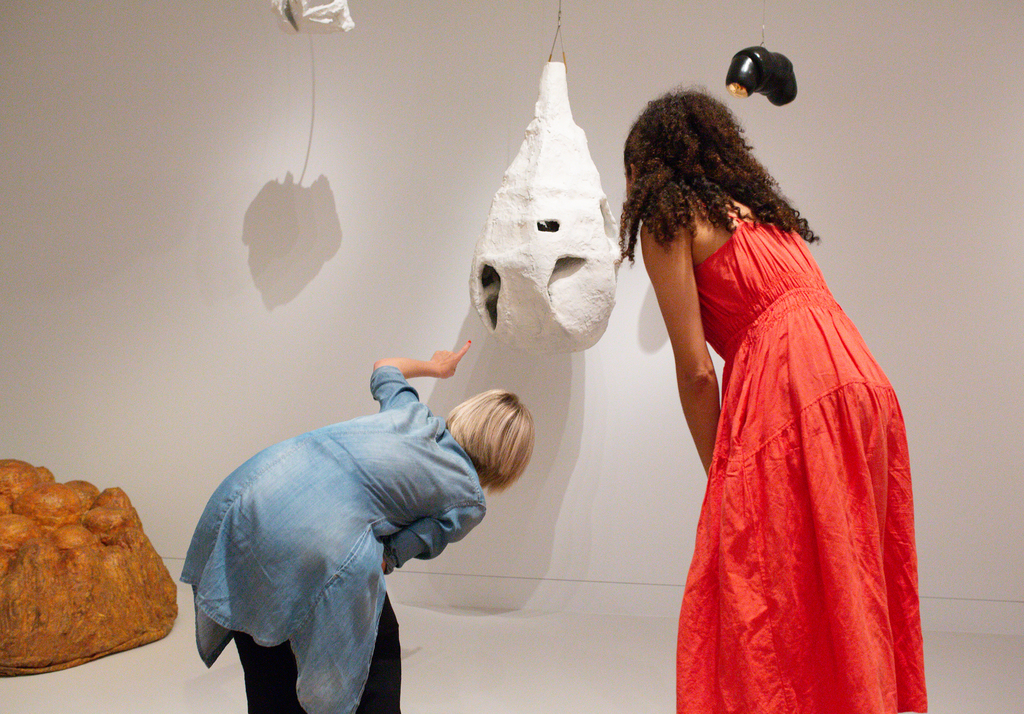
Installation view of Abstract Erotic, The Courtauld © Fergus Carmichael.jpg
"the tension between power and vulnerability"
In the first room, smaller pieces are displayed within a glass shelved unit which platforms some of the artists’ mutual preoccupations: the abject, and the ways in which the body spills out of itself. Louise Bourgeois’s Resin Eight, 1965 – made of dark brown resin over curled hemp – looks disconcertingly like excrement, the depiction of which is decidedly not ‘ladylike.’ Discomfort is as integral to these works as embodiment, sexuality and irony. Many of the forms here are bound, suspended, curled—manifesting external forces like gravity or the pressure of other materials. By making these forces visible, Bourgeois, Hesse and Adams motion towards the societal constraints which limit women, as well as the methods we use to oppose them.
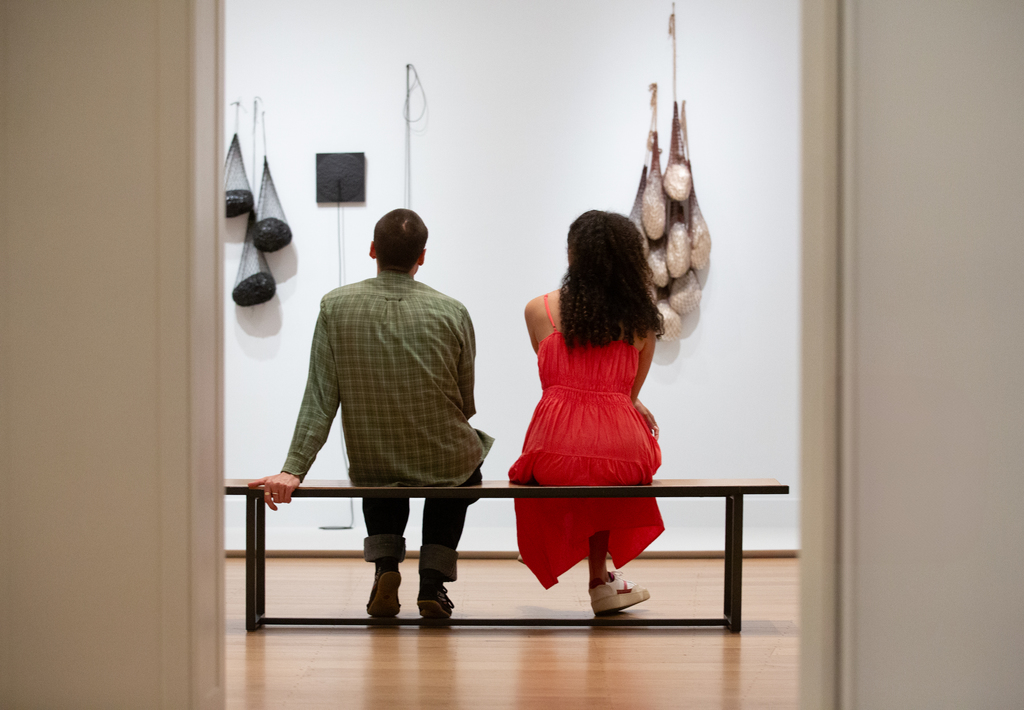
Installation view of Abstract Erotic, The Courtauld © Fergus Carmichael.jpg
"latex, papiér mache and netting are displayed alongside bronze, industrial metal and resin"
Louise Bourgeois’s Fillette (1968) — a small latex-covered sculpture shaped like an erect penis — hangs from a meat hook, exposing the tension between power and vulnerability. The thin wire from which the piece is hung inverts the idea of dominance: something proportionally smaller than the broader sculpture has power over it. Here, the traditional symbol of patriarchal order – the phallus – is just meat. Yet, seen from a different, upturned perspective this sculpture could just as much be a woman’s torso. Bourgeois’s work often features these kinds of androgynous gestures, and so does Hesse’s: Untitled or Not Yet, 1966, made of hanging weighted fishing nets, is as scrotal as it is breast-like (the same can be said for Bourgeois’s Tits, 1967). Blurring the distinction between male and female traits serves as an appeal for gender equality and mocks the idea of these rigid categories in the first place.
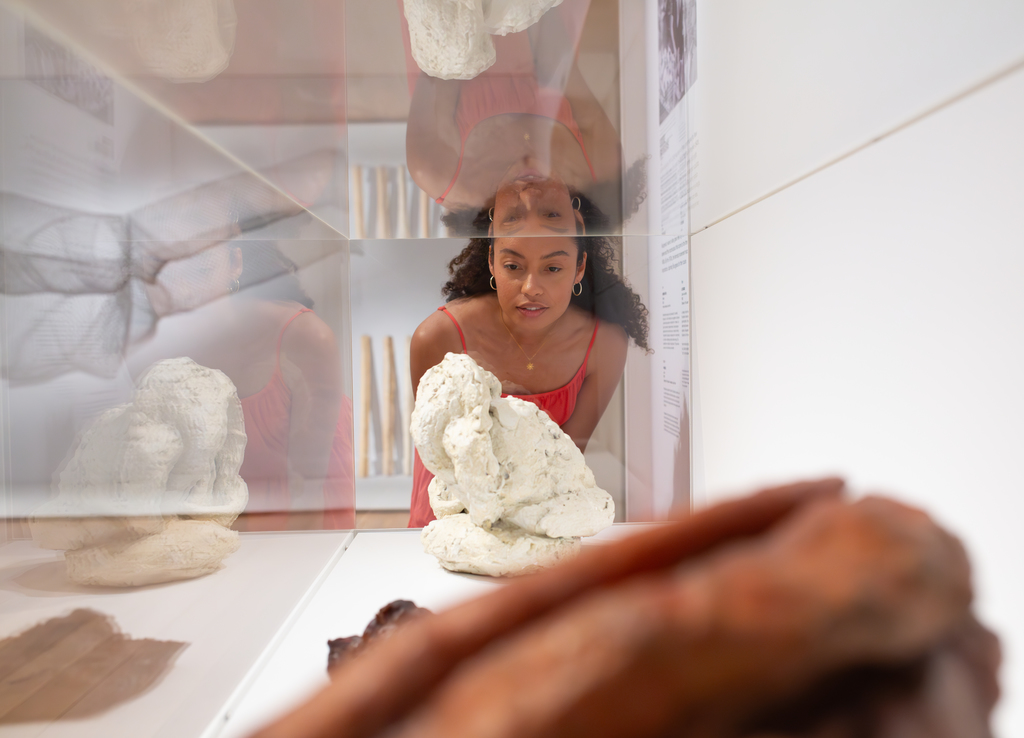
Installation view of Abstract Erotic, The Courtauld © Fergus Carmichael.jpg
Presumably, the idea behind reuniting these three artists – without their male counterparts – was to give them room to claim conceptual ground for themselves. If that’s the case, it’s baffling that the actual, physical gallery space feels so cramped. The exhibition consists of only two rooms, the first a smaller space where all three of their works sit alongside and among each other, the second offering each artist a single wall. Adams’ large sculpture 22 Tangle, 1964-1968 – made from a tube of chain link fence and adjoining steel cable that appears to have been knitted into chicken-wire – is charged with industrial heft while not being given enough space to hold the energy it instinctively demands. For an exhibition concerned with the relationships and dynamics between bodies, it doesn’t give the works enough room to breathe. It’s hard not to see this as an unintentional representation of the limited spaces female artists often have to work within.
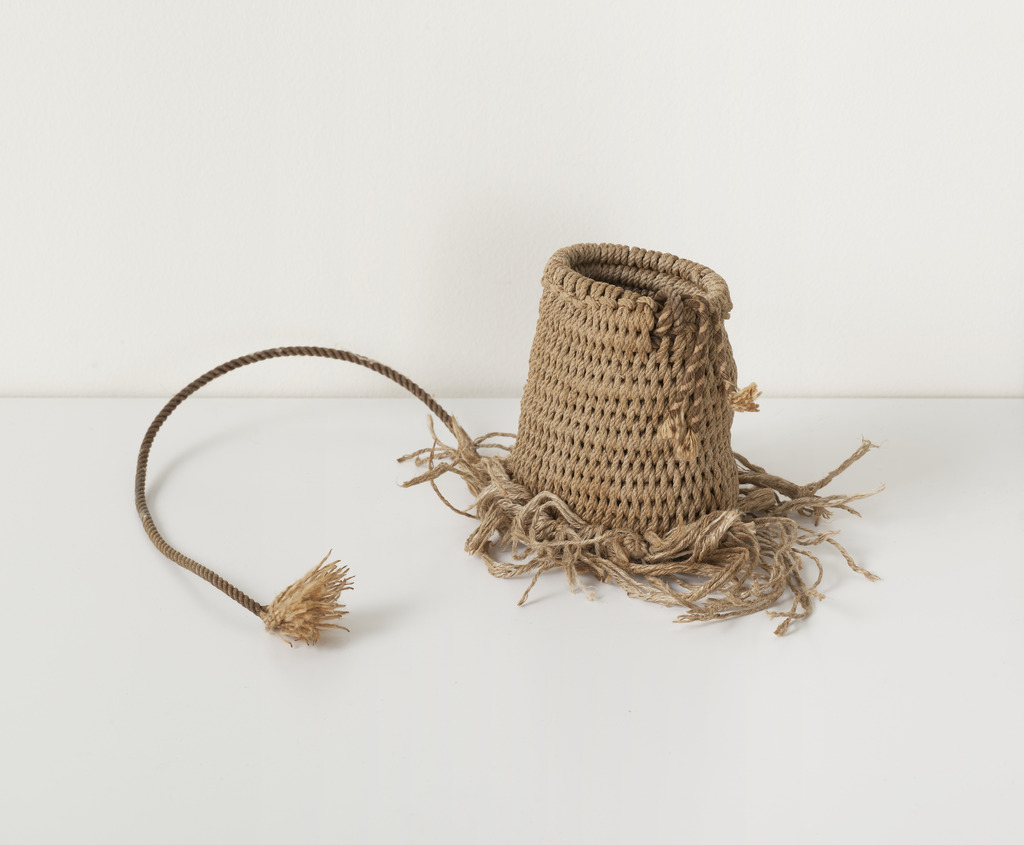
Alice Adams, Sheath, 1964. Collection of Beth Rudin DeWoody © Howcroft Photography, Boston
Sixty years on from the exhibition that first brought these three artists together, The Courtauld’s reunion of Bourgeois, Hesse, and Adams draws attention to the enduring significance of female desire and creativity. Through raw materiality and a playful voice, the sculptures of all three artists intersect and bolster one another, sharing a feminist dialogue which remains as urgent today as it did in 1966.
By Godelieve de Bree